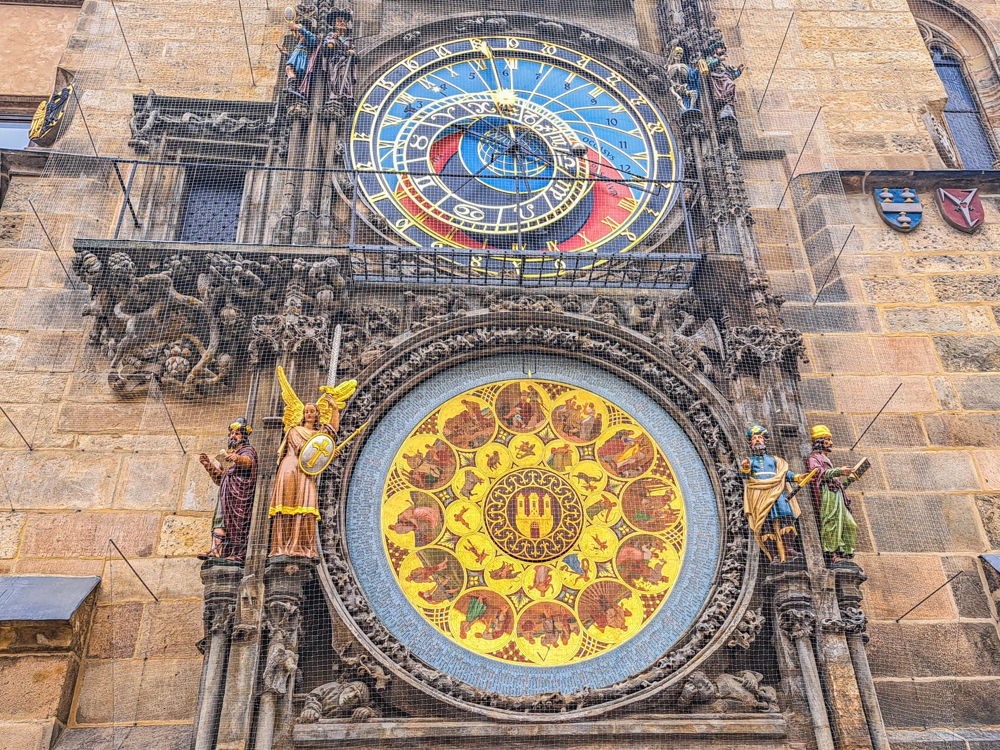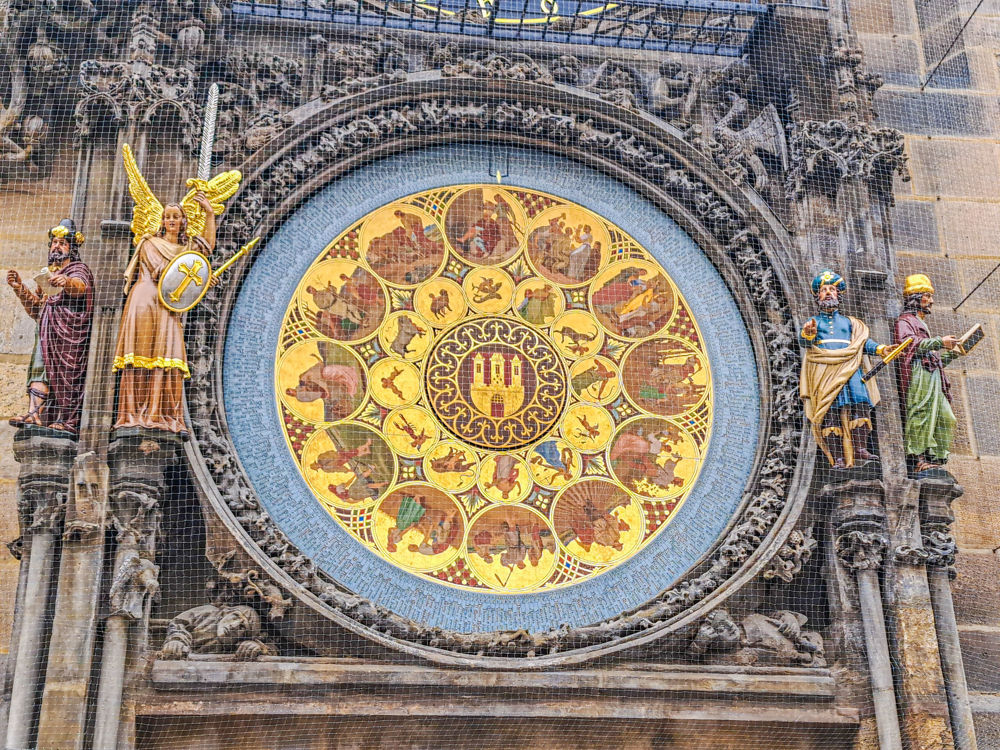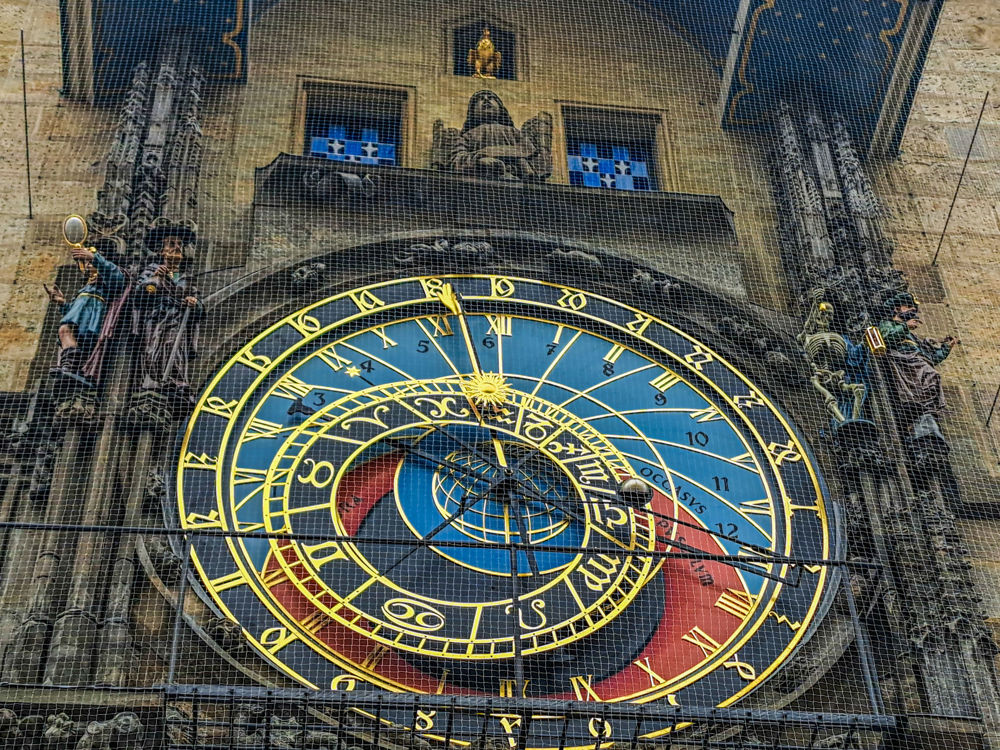The Prague astronomical clock or Prague Orloj is a medieval astronomical clock attached to the Old town hall at the Old town square in Prague.
The clock was first installed in 1410, making it the third-oldest astronomical clock in the world and the oldest clock still in operation.

The clock mechanism has three main components – the astronomical dial, representing the position of the Sun and Moon in the sky and displaying various astronomical details; statues of various Catholic saints stand on either side of the clock; "The Walk of the Apostles", an hour show of moving Apostle figures and other sculptures, notably a figure of a skeleton that represents Death, striking the time; and a calendar dial with medallions representing the months. According to local legend, the city will suffer if the clock is neglected and its good operation is placed in jeopardy; a ghost, mounted on the clock, was supposed to nod its head in confirmation. According to the legend, the only hope was represented by a boy born on New Year's night.

The oldest part of the Orloj, the mechanical clock and astronomical dial, dates back to 1410, when it was created by clockmaker Mikuláš Kadaň and professor of astronomy Jan Šindel. The first recorded mention of the clock was on 9 October 1410. Later, presumably around 1490, the calendar dial was added and the clock facade was decorated with gothic sculptures. The Orloj has been repaired several times since it was installed in 1410. The last major renovation cost the city $2.6 million and was finished in 2018.

The colorful medieval clock is one of the most famous sights in Prague, adorning every tourist guide and attracting large crowds who gather to watch it work.




